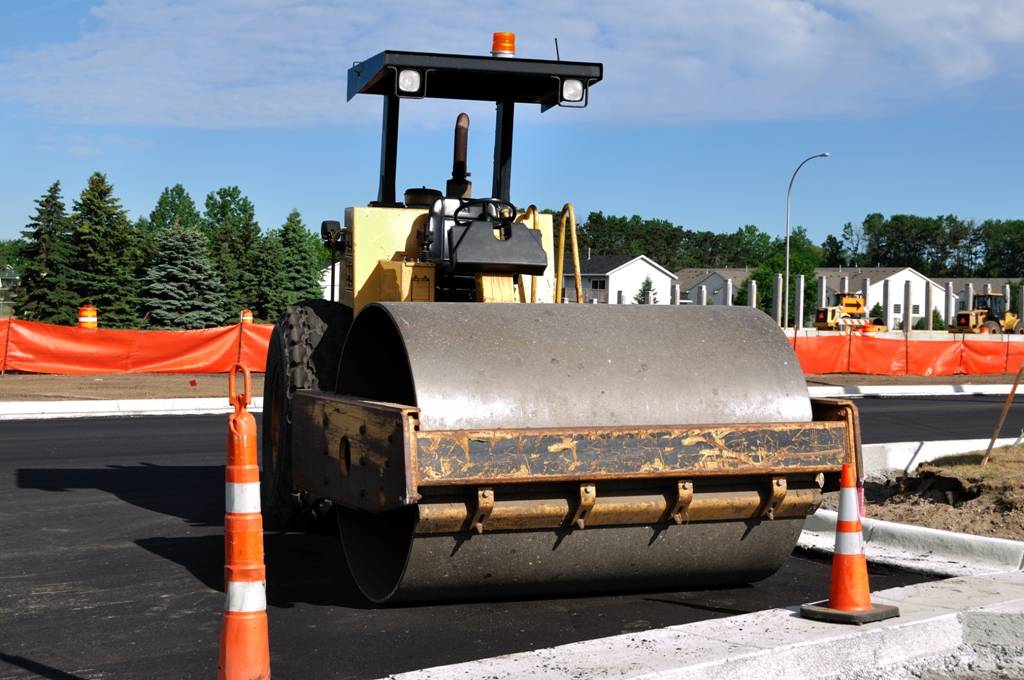Bitumen emulsion is mainly used for road construction projects. It is a direct emulsion where the dispersed phase is formed from pure or cutback bitumen. These materials are prepared in special devices such as the GlobeCore UVB-1 unit. This model consists of component storage containers, dispensers, colloid mill, and a container for the finished product.
The quality of the output product depends on several factors that include, the size and amount of bitumen droplets, the type and amount of emulsifier, and the acid or alkali (used for anionic emulsions). The above factors determine the physicochemical properties of bitumen emulsion, that primarily include the acid number, conductivity, strength of the electrostatic repulsion, the sign of charge decay rate, viscosity, and coalescence.
Today there is no universal recipe for bitumen emulsion. So the ingredients depend entirely on the purpose of the specific application. There are however, some general rules that need to be followed and include the following:
- The basicity of the acids should be sufficient to ensure that a given amount of emulsifier will generate a protective layer. Simultaneously, there should be just enough of the emulsifier in order to form one layer instead of two;
- The concentration of the bitumen is chosen so that it does not exceed a predetermined threshold beyond which there is loss of processing properties of the emulsion. In practice, this threshold value is within 56% of the anionic emulsions and 70% for the cationic emulsions; and
- To reduce foaming, it is important to calculate an optimal temperature necessary to conduct the aqueous phase so that the temperature of the bitumen emulsion at the outlet of the colloid mill does not exceed 95°C/206°F.
One of the advantages of bitumen emulsion, owing to its main technological properties, is its stability. The following factors with regards ti stability should be considered:
- Stability while stored;
- Stability with respect to mineral materials.
It is possible to artificially slowdown the decay of bitumen emulsion by adding a larger amount of emulsifier into the mixture. Additionally, it is possible to achieve optimum pH levels by considering the nature of the binder and emulsifier.
If the acidity of the bitumen is adjusted by the addition of strong organic acids, it can form an unstable emulsion. This is due to the migration of a significant portion of the acid introduced into the aqueous solution. Operational reliability and quality of the bitumen emulsion is largely determined by the type of emulsifier used in the manufacturing process.
Another important property of bitumen emulsions is the rate of surface decay of the mineral material. It determines whether it is possible to apply the emulsion in particular cases. If cationic emulsion comes in contact with the filler, the decay is almost immediate. It is a result of the reaction between bitumen and the surface of the stone material. This is followed by an immediate displacement of water.
To get the desired bitumen emulsion, it is necessary to select the original bitumen with the correct physicochemical properties. This rule applies to equipment, method, material treated, and weather conditions. The preparation of pure bitumen therefore, can be modified or fluxed.
If you want to improve the wettability of the surface of gravel, then it is best to treat the material with a plasticized thinner. Too much plasticizer however, can lead to a loss of cohesive properties of the binder, separation, and release of the rubble.
The adhesive and cohesive properties of the asphalt binder could be compromised if there is not enough liquid to cover the bitumen film rubble and of sufficient strength to resist dynamic stresses resulting from vehicle traffic.

